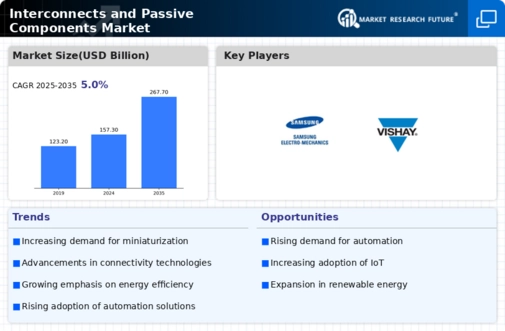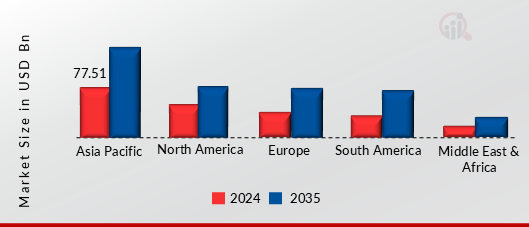Interconnects And Passive Components Size
Interconnects and Passive Components Market Growth Projections and Opportunities
The Interconnects and Passive Components market is influenced by several key factors that shape its dynamics and growth. One significant driver is the escalating demand for electronic devices across various industries. As the world becomes increasingly interconnected, the need for efficient and reliable interconnects and passive components has surged. These components, including connectors, cables, resistors, and capacitors, play a crucial role in the functionality of electronic devices, ranging from consumer electronics to industrial machinery. The proliferation of smart devices, IoT applications, and the automotive industry's electrification drive contribute to the growing demand for these components.
Market competition is another pivotal factor influencing the Interconnects and Passive Components industry. Numerous companies compete to provide high-quality and cost-effective solutions, leading to constant innovation and technological advancements. Manufacturers strive to develop components with improved performance, smaller form factors, and enhanced durability to stay competitive in the market. This competitive landscape fosters a continuous cycle of research and development, benefiting consumers with advanced and efficient interconnects and passive components.
Global economic trends and government policies also play a significant role in shaping the Interconnects and Passive Components market. Economic growth in various regions, especially in emerging markets, contributes to increased investments in infrastructure, telecommunications, and manufacturing, thereby boosting the demand for these components. Government regulations related to safety standards, environmental sustainability, and product certifications also influence the manufacturing and marketing strategies of companies in the market.
The evolution of technology and industry standards is a key factor influencing the Interconnects and Passive Components market. Advancements in electronic manufacturing processes, miniaturization of components, and the transition to higher-speed data transmission impact the demand for components that can meet these evolving requirements. Compatibility with emerging technologies, such as 5G networks and electric vehicles, becomes crucial for manufacturers to stay relevant in the market.
Consumer electronics trends and the demand for innovative products contribute significantly to the market dynamics of interconnects and passive components. The rise of smart devices, wearables, and the integration of connectivity features in everyday products drive the need for compact and efficient components. Consumer preferences for sleek designs and enhanced functionalities push manufacturers to develop components that not only meet technical specifications but also align with the aesthetic and performance expectations of end-users.
Geopolitical factors and global supply chain dynamics also impact the Interconnects and Passive Components market. Trade tensions, tariffs, and disruptions in the supply chain can affect the availability and pricing of these components. Manufacturers must navigate these challenges to ensure a stable supply chain and mitigate risks associated with geopolitical uncertainties.






Leave a Comment